If we refer to the most beautiful towns in the province of Ciudad Real as historical sites, surely it comes to mind Almagro, but there is another lesser-known place that also stands out in this regard.
Is Villanueva of the Infants, a town that I was recently told about as an architectural complex that had to be discovered, and which is part of the group of Most beautiful villages in Spain.
In our recent trip through the south of Ciudad Real We have had as one of the first objectives the visit of Villanueva de los Infantes, a town located southeast of this province of Castilla la Mancha, south of Manzanares.
If you come from Madrid on the A4, arriving at Villanueva you will pass through San Carlos del Valle, small town located on the route of the ancient Camino Real, where you should stop to see its charming Plaza Mayor, monumental complex from the beginning of the 17th century.
Villanueva of the Infants, with 5.000 inhabitants, is the capital of the Campo de Montiel region, and it is the most outstanding historical complex in the province along with Almagro.
It is also the place where he died Francis of Quevedo, great author of Golden age, and where his remains are buried.
All the information in detail
What to see and do when visiting Villanueva de los Infantes
At a first glance of Villanueva of the Infants, it is striking how well the original architectural configuration of its historic center has been preserved, as you will not see buildings taller than others or modern apartment houses.
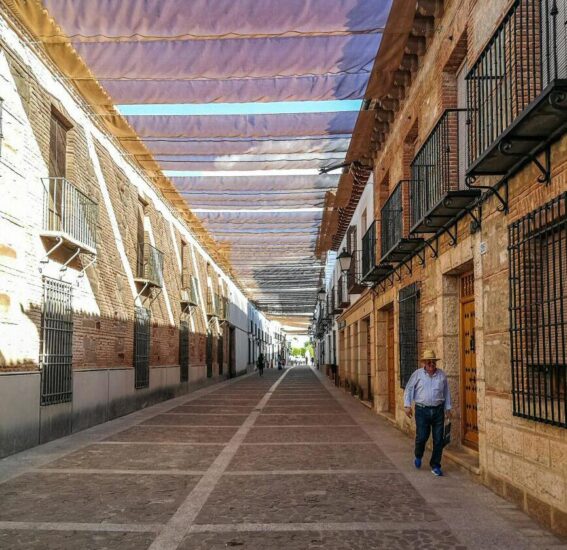
They tell us that this is due to a very rigorous surveyor who was in the town hall during the last decade of the 70s, and who prevented indiscriminate construction in the town.
You will also be struck by the use of reddish stone on the facades of the historic houses, which is explained by the fact that it comes from an old quarry with the presence of iron.
Villanueva of the Infants It belonged since 1421 to the Order of Santiago when it was declared a town.
Its historical roots are reflected in the more than 252 coats of arms cataloged on the facades of houses in the town.
The main axes of Villanueva of the Infants are the aforementioned Plaza Mayor and Cervantes Street.
Plaza Mayor of Villanueva de los Infantes
When you arrive at the aforementioned Plaza Mayor, you will see that it is a beautiful monumental complex where the church of San Andrés and Town hall, building with a lower gallery with arches.

Quevedo in Villanueva de los Infantes
La church of San Andrés It is the main religious temple of the town and is a place noted for housing the aforementioned remains of Francis of Quevedo, which have been identified after carrying out a morphological study.
You find these remains in a metal urn located in a cavity under the floor, which you can see through a glass.
Built in the 16th century, it shows three doorways, two in Plateresque style, and the main one in classical style, and its interior is in Gothic style with a cross vault and side chapels.
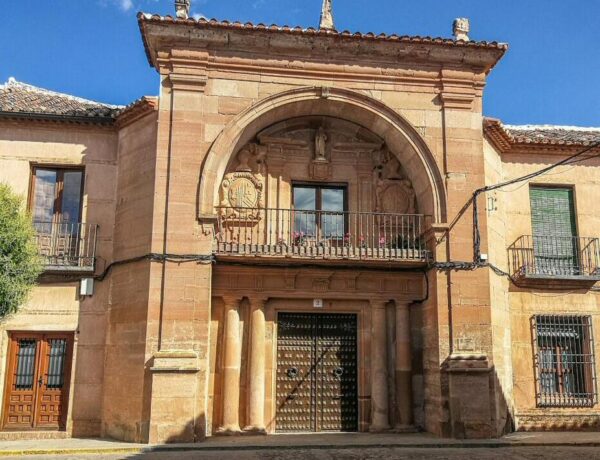
On your visit to the town you will walk through the streets of the historic center seeing ancient manor houses from the 16th and 17th centuries with stone doorways with heraldic shields, inside which typical Castilian patios open.
Some of these patios can be visited during the Open Patio Days which take place in the month of October.
That is the case of the building known as The Alhóndiga, located in front of the church of San Andrés, which was used to store wheat, and since 1719 as a regional prison.
From the 70th century, it has a rectangular patio with thick circular columns, and was used as a prison until the XNUMXs of the last century.
Another notable building is the Santiago Hospital, now a municipal headquarters, building from 1631 founded by the Order of Santiago, where the poor, widows and sick were cared for.
ORGANIZE your TRIP
- Don't forget your TRAVEL INSURANCE with a 5% discount
- Book the HOTEL for your trip
- RENT a CAR for your trip
- The best TOURS and EXCURSIONS in Spanish
- NO-LINE TICKETS for museums and monuments
- Best FREE TOURS around the world
- Book your TRANSFER from the airport
- eSIM card with INTERNET at the best price
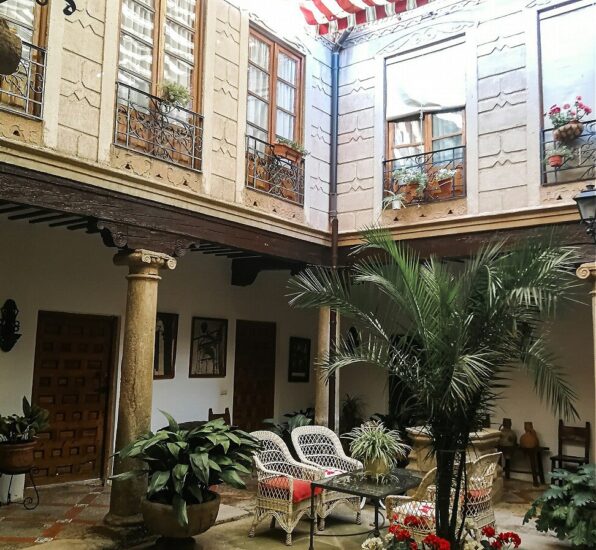
Stately houses in Villanueva de los Infantes
On your walk you will also be struck by the façade of the Arc's House, perhaps the most artistic of those shown stately houses of Villanueva de los Infantes.
Several of them are grouped in the aforementioned Cervantes Street, where a good part of the noble families settled, and which you now recognize by its façade with Tuscan columns and by the heraldic shields.
Rincón also highlighted is the House of Studies o Junior College, with one of the most beautiful patios in the town, and where Francis of Quevedo He gave classes.
On your walk you will be able to recognize the Inquisition Prison by the shield on the wooden door of its façade that shows the cross, a skull and crossbones.
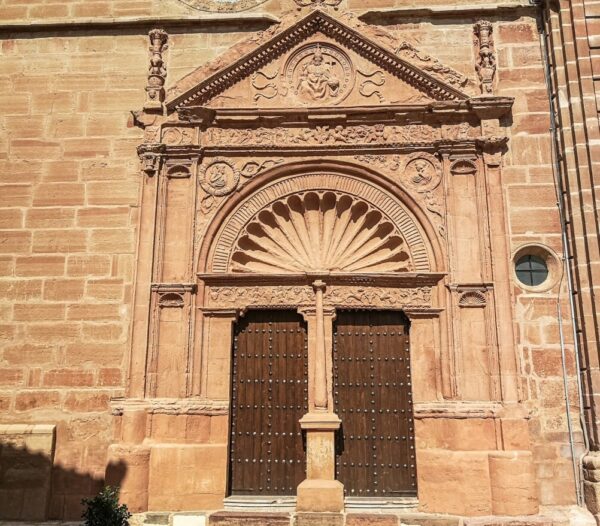
Other notable corners are the Saint Thomas Oratory, Melgarejo Palace or Palace of the Marquis of Entrambasaguas, with a large lintel doorway and Doric columns.
Perhaps the most beautiful patio we could see during our visit of Villanueva de los Infantes is that of the House of the Knight of the Green Coat,
It is a 16th century building that once belonged to the Jesus company, which is inspired by the one mentioned in El Quijote, with a central well and wooden galleries, and whose owner usually leaves it open so that it can be seen.
Finally, it should be noted that in the old Santo Domingo Convent you can see the cell where Quevedo died during his stay in Villanueva of the Infants.
Map: how to get to Villanueva de los Infantes
Villanueva of the Infants It is located southeast of the Ciudad Real province, two and a half hours from Madrid on the A4 and east of the town of Valdepeñas.




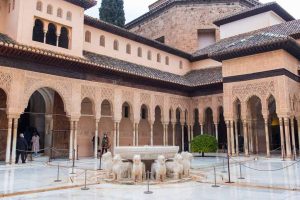












I loved it. I hardly knew it except the square and the church of San Andrés. Thank you